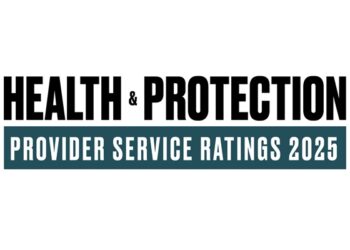At the start of 2023 some advisers in the health and protection sector are bracing themselves for a “dismal” year in which they help customers move onto cheaper cover and concentrate on looking after the clients they already have.
However, some are looking at growing the markets they sell into. Whatever the approach, all will be hoping to attract new customers, but the methods they use vary.
While lead generation plays a role in helping them do this, it appears tried and tested word of mouth and newer marketing methods through social media dominate as ways of reaching out to new customers.
And as advisers continue to feel the fallout from 2022, it seems the only certainty is uncertainty – meaning the importance of running an agile business capable of adapting to that change has never been more important.
‘Dismal’ year ahead
“The growing challenge over the last year and into this year is undoubtedly the impact of the rising cost of living and higher interest rates,” David Hollingworth, associate director, communications at L&C Mortgages told Health & Protection.
“These two factors will be putting the squeeze on monthly budgets and inevitably see some looking to cut back on expenditure elsewhere.
“That heightens the challenge of ensuring that customers see the value and importance of protection when finding their budget tight.”
Alan Lakey, director at Highclere Financial Services, told Health & Protection that he is braced for a “dismal” year in which consumers will be looking to reduce expenditure.
“We have looked at obtaining cheaper life and critical illness cover for clients, particularly those with mortgage-linked plans where the plan interest rate is often substantially higher than the actual mortgage debt,” Lakey said.
“This means they are over-insured and allows us to offer cheaper plans without reducing the quality of the cover.”
The cost of living crisis afflicts more than just these shores.
Nadia Jafar, chief executive of Bluestone of London, told Health & Protection it is affecting also global healthcare and people and businesses worldwide.
But Jafar adds that she expects clients will be looking for more cost-effective products to ensure continuity as opposed to fully cancelling their plans.
PMI growth opportunities
However, some markets such as private medical insurance (PMI) are experiencing growth.
Claire Ginnelly, independent health cover consultant and vice chairwoman of the Association of Medical Insurers and Intermediaries, revealed a lot of the domestic UK PMI market, whether it is advisers or insurers, is reporting an increase in demand for PMI and health related policies.
“This is as a result of the increased focus on health and wellbeing following the pandemic but the current crisis in the NHS must also be driving demand,” she added.
And in terms of the growth opportunity, Isaac Feiner, owner of Lifepoint Healthcare, highlighted that just 12% of the UK population is covered with PMI and a large percentage has no protection insurance in place.
“This represents a huge market. Those that are proactive in reaching this market will achieve great things,” Feiner added.
“The population needs to know these solutions exist, this will be through marketing, publicity and education from all parties involved – insurers and brokers alike.”
But for those specialising in protection there does appear to be an element of battening down the hatches this year.
Lead generation dilema
Andrew Wilkinson, director at Moneysworth, explained that rather than developing into new markets during 2022, his firm focused on its core market of people living with health conditions and doing a lot of market research on behalf of the firm’s clients.
Wilkinson has never used lead generators to develop business, with customers finding him organically through internet searches.
“People do searches on the internet and find us that way. We also get some referrals from exiting clients,” he continued.
“We also get referrals from introducers and the BIBA Find Insurance service.”
Though for LifeSearch, lead generation will always have a role in generating business.
“It’s all about the nature of the lead generation and where in the funnel the customer is to best understand the customer journey and then ensuring the right engagement is in place,” chief growth officer Emma Walker explained.
“Word of mouth from friends and family is very powerful and as a business with a 25-year heritage, we are proud to generate referrals that are backed by happy and engaged customer outcomes.
“Organic social media is hard to achieve at scale. Customers, as the media owners, will often as not favour paid and promoted content, so then it’s all about budget and scale.”
For Charlie Cousins, owner of Hooray Health & Protection, lead generation combined with referrals have proven successful in building a strong client list for his firm.
“Referrals from your existing clients are of course brilliant and always more than welcomed, but you need to be reviewing all avenues so as not to miss out on any opportunities,” he added.
Using social media to build a trusted brand
And according to Cousins, social media is also part of this marketing mix.
“Social media is key to building a strong brand, getting the business name and what we stand for out there, and showing your clients what you are doing,” he added.
“It isn’t the greatest for instant lead generation we have found – but it’s business critical to building a trusted brand that clients are going to see they are guaranteed support.”
L&C’s Hollingworth is also a supporter of digital activity and maintains that developing more online content focused on protection will help give customers additional resources.
“That can also help in reaching new customers that may have seen us only as a mortgage broker,” Hollingworth added.
“Focusing on social media and newsletter content will help to underline the fact that we have a specialist protection advice team available to help, whether they are considering renewing their mortgage or not.
“Ultimately this should help to build a better profile as a protection adviser as well as provide more educational information for customers to highlight why protection should be seen as an essential.”
And for LifeSearch these new customers include younger and later life consumers, Walker noted.
“A key challenge is engaging untapped customer segments, namely younger and later life customers at the earliest stage,” she said.
“This means redesigning a process that’s dynamic and tailored for different user groups, their expectations, needs and schedules. The challenge will be engagement and affordability; making sure customers see they have done something of value.”
‘We’ve always done it this way’
But if 2022 proved anything it was that change is a constant and as Cousins points out the biggest opportunity sits with ensuring advisers are constantly changing and adapting – not only with industry trends and new developments in policies, but also in responding to the shifting needs of clients.
“Too many brokers are stuck in the mindset of ‘we’ve always done it this way’, which ultimately hampers growth. This lends the brokers an old-fashioned appearance to new and existing clients looking for a fresh understanding of what it is they need,” he concluded.






